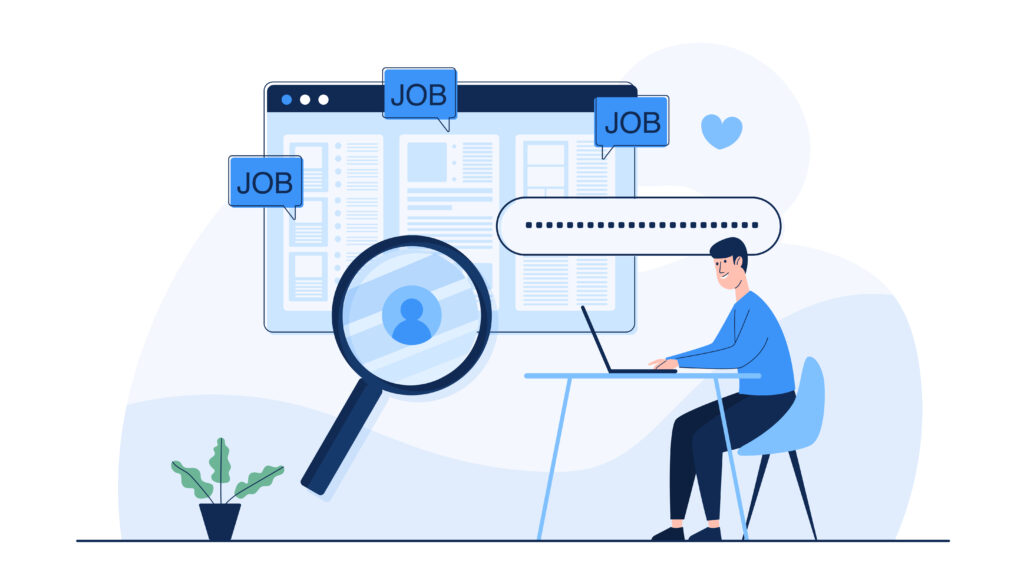The modern tech job market is ultra-competitive. Securing a position isn’t just about what you apply for—it’s about when.This guide breaks down a smarter job search strategy using tailored job alerts to give you a significant edge.

Why Timing Matters in a Competitive Job Market?
Job postings for tech and data roles fill quickly—especially in startups and top-tier companies. The first applicants often get the first interviews. Early birds really do get the worm.
The Power of Job Alerts: Apply Early, Apply Smart
Automate your search and beat the competition by setting up targeted job alerts. Focusing on relevance and speed allows you to act fast without wasting time scrolling through irrelevant postings.
Best Platforms to Set Job Alerts for Tech & Data Roles
- LinkedIn – Offers a vast network with robust filters for job titles, experience levels, and companies.
- Indeed – Advanced filters for skills, salary, location, and experience level.
- AngelList – Startup-focused, early-stage companies hiring for growth-focused roles.
- Crunchboard – Lesser-known but valuable for discovering innovative tech companies.
- Dice – Tech-exclusive job board with advanced skill filtering.
- DataJobs – deal for data-centric roles: analysts, scientists, engineers.
- Bonus: Stack Overflow & Wellfound – Niche platforms where developers and data pros can discover quality jobs.
How to Use Boolean Search to Refine Alerts
Utilizing Boolean operators can enhance the precision of your job alerts.
- Example: “Data Analyst” AND (SQL OR Python) AND “Remote”
This increases alert accuracy and reduces job spam—giving you a smaller, more targeted set of roles to focus on. This saves time, reduces overwhelm, and allows for higher-quality, more strategic applications.
Customizing Alerts by Role Type and Career Stage
- Entry-level: include terms like “Junior,” “Associate,” or “Internship.”
- Mid-career: focus on title-specific searches and management keywords such as “Lead Data Analyst,” “Senior Software Engineer,” “Director of Data Science,” or “VP of Engineering.” These terms reflect career progression and can help uncover higher-responsibility roles.
- Switching roles? Include keywords related to transferable skills.
Location Filters: Local vs. Remote Strategies
Use geo filters effectively for remote or hybrid preferences. Highlight cities with booming tech sectors such as San Francisco, New York City, Austin, Seattle, and Atlanta. These hubs often have a high concentration of opportunities, especially in emerging technologies and data-driven companies.
Frequency & Volume: Avoiding Alert Fatigue
Balance the frequency of job alerts to maintain effectiveness without becoming overwhelmed:
- Active Job Seekers: Daily alerts keep you informed of new postings promptly.
- Passive Job Seekers: Weekly alerts provide updates without inundating your inbox.
- Use test runs: Set different frequencies across platforms to see which yield better matches and manageable workloads.
- Prioritize quality over quantity.
Regularly assess the volume and relevance of alerts, adjusting settings as needed to ensure a manageable and productive job search.
Common Mistakes in Setting Job Alerts (And How to Fix Them)
- Overly Broad Alerts: You’ll drown in irrelevant jobs—spending valuable time sorting through positions that don’t fit your skills, goals, or preferences.. Fix: Refine criteria using specific keywords and filters
- Overly Narrow Alerts: May result in missing potential opportunities. Fix: Broaden criteria slightly and experiment with different keyword combinations.
Integrating Alerts into Your Daily Job Search Workflow
- Morning Scan + weekly review = Staying proactive without burnout.
- Save time to focus on: Resume, portfolio, and interview prep
Use Alerts to Beat ATS Systems
Applying early improves the chances of human eyes on your resume. Ideally, aim to apply to jobs that have been posted within the last 3 days—this significantly boosts visibility and response rates. Older postings will have high application volume and are less likely to yield interview opportunities.
Most Applicant Tracking Systems (ATS) score by relevance and timing.
The Link Between Alerts & Interview Volume
Anecdotal and data-backed evidence suggest that early applicants get 3–5x more callbacks. Alerts help you apply within the first 24 hours.
Complement Alerts with a Standout Application
While job alerts provide timely opportunities, a compelling application is crucial. Tailor your resume and cover letter to highlight relevant skills and experiences, and consider seeking professional guidance to enhance your application materials.Consider:
- Using tools from the Career Acceleration Hub to build an optimized resume and LinkedIn profile.
- Preparing with resources that go beyond applying—practice interviews, salary negotiation, and more.
Real-World Success Stories
- From Nurse to Technical Product Manager in 60 days.
- From Data Team Lead to Principal with 24% salary increase in 30 days.
- 32 apps → 6 interviews → 2 offers.
- Job alerts enabled faster outcomes and a crucial foundational aspect of a strategy job search.
Conclusion: Smarter Applications Start with Smarter Alerts
Effectively utilizing job alerts transforms them from mere conveniences into powerful tools in your job search arsenal. By setting them up thoughtfully and integrating them into a strategic application process, you can navigate the competitive tech job market more efficiently and successfully.
For personalized guidance and support in your tech or data career journey, visit My Data Career Coach.
FAQs
How do I set up job alerts on LinkedIn?
Navigate to the ‘Jobs’ section, search for your desired position, and toggle the ‘Job Alert’ switch to receive notifications.
Can I set up multiple job alerts on different platforms?
Yes, it’s advisable to create tailored alerts on various job boards to maximize exposure to relevant opportunities.
How often should I update my job alert criteria?
Regularly review and adjust your criteria, especially if you’re receiving too many irrelevant alerts or not enough suitable opportunities.
Do job alerts cost anything to set up?
Most job platforms offer free job alert services, though some may have premium features available for a fee.
Will setting up job alerts increase the number of emails I receive?
Yes, but you can manage this by setting the frequency of alerts and using email filters to organize incoming
